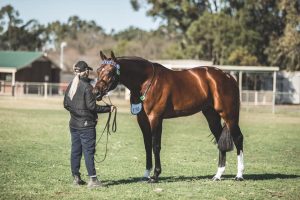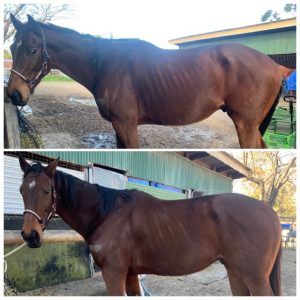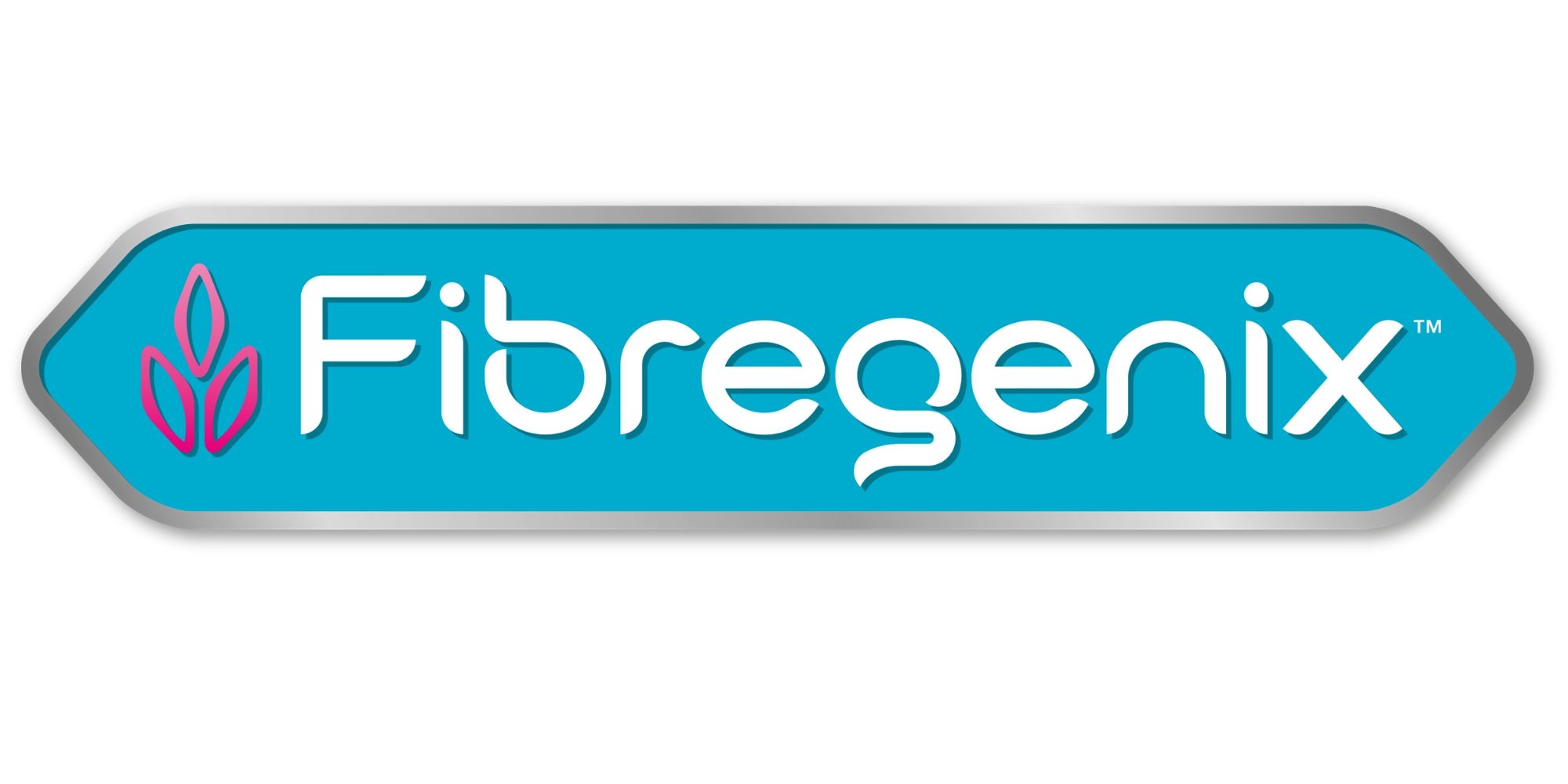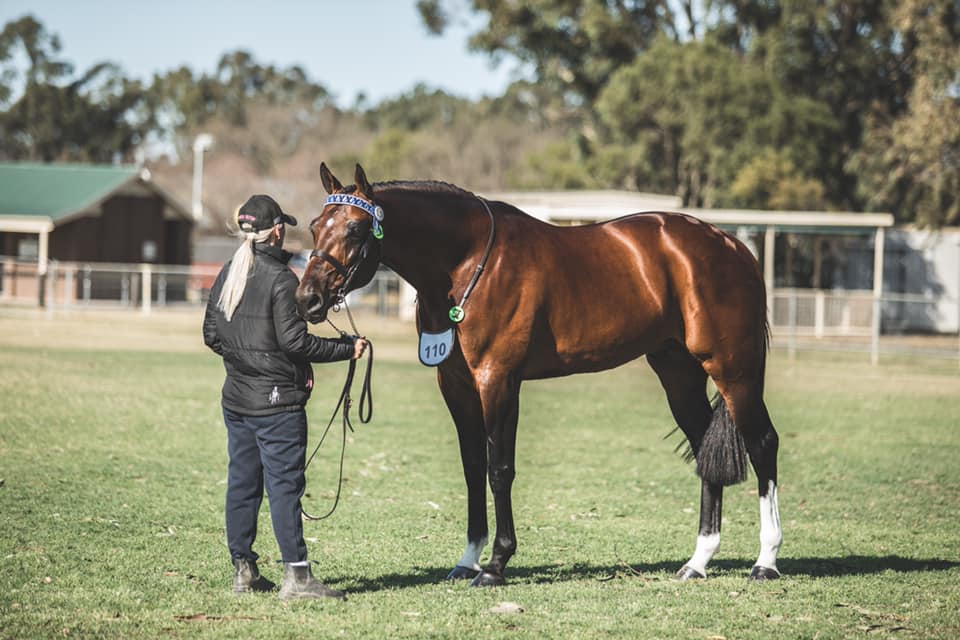Muscle development and promoting topline.
What is topline and why does it matter? Good topline is something most horse owners strive to achieve. It showcases your horse at his very best. A horse also needs good topline and condition to protect his thoracic vertebrae when being ridden. If muscle development and promoting topline is your priority, then the right training and correct diet should be your focus.
How that muscle is distributed across the body is largely genetic. For example, a Quarter Horse has a higher proportion of fast twitch muscles which are bulkier than an Arab. An Arab has more slow twitch muscles. This is why their appearance is quite different with the quarter horse having well-developed gluteal (hind-quarter) muscles.
It’s a fact that some breeds maintain their topline easier than others. A good example of this is ponies, native breeds, stockier cold-blood breeds, and even Arabs. Others can drop quite quickly when they’re put out to spell or workload is reduced. A prime example of this would be thoroughbreds.
So, if your horse has topline problems you need to look more deeply at the following to remedy it.
Step 1 – Ask yourself why…
Because whatever the breed, horses are actually genetically programmed to have good toplines from neck to tail naturally. However, two things will affect this – an underlying medical issue affecting muscle development or poor nutrition.
Except in malnutrition cases, the main problem horses lacking a topline likely have is a history of poor posture. Remember – it’s the past events that shape the posture of the horse.
Just like us, horses need good posture when standing and moving to help prevent back and neck pain. And it’s their abdominal tunic (which covers the oblique muscles and supports the abdomen) that works to help support the back. If the core stability isn’t there, the back and neck take over to manage that stability. And that’s where things can become painful. But to rebuild topline, you first have to figure out why it disappeared in the first place. So, start by looking at your horse’s musculoskeletal history.
Topline issues can develop when some horses are ridden too young, when they’re too weak to carry the rider. Also because of bad saddle fit, or back or neck problems. Lameness is another common culprit. Lameness and neck/back problems are not mutually exclusive.
Horses can also lose their toplines while on stable rest after an injury. It’s equivalent to bed rest for a human. That’s also true for sport horses that spend most of their time stabled. Muscle mass just gets wasted and if you don’t use it, you lose it. Other issues that can also weaken the abdominal muscles include foaling and colic surgery.
Underlying health conditions can also be to blame. For example if your horse has a muscle-related diseases such as polysaccharide storage myopathy (PSSM). This can create great difficulty building topline, as with older horses who don’t build muscle mass well. Likewise horses with equine Cushing’s disease have difficulty metabolising and using muscle-building proteins as they should.
The Genetics Factor
Unfortunately, genetics and conformation will always remain the limiting factor. Some horses’ conformation won’t change even with a high protein diet and an intense exercise programme. Remember, the nice, rounded appearance we all get drawn to, particularly the horse’s topline, is comprised of muscle and subcutaneous fat. So it’s important to assess your horse’s overall body condition score as he may just need more calories in his diet.
Step 2: Fix The Underlying Issues Preventing Muscle Development and Promoting Topline
By resolving the primary issue behind topline loss, it allows the horse’s brain to “reset.” Topline muscles don’t strengthen from sweaty workouts but through building core muscles – think of it as posture training. The rider needs to train the horse’s mind to know what to do with those muscles as well as the opposing ones along the abdomen.
It’s all about synergy between abdominal and deeper core muscles. These muscles have to function synergistically with the back, with core dynamic stability. That requires motor control in the brain. So essentially, you have the brain guiding the movement of the different body parts. And the brain needs to know what to do and accept that.
You may need to work with your vet to diagnose any medical issues your horse might have and plan management options. If pain is to blame, topline-building exercises will only make it worse. Trying some topline exercises on a painful horse can trigger a pain response that’ll cause defensive behaviours. If the primary problem is limited movement, get the horse moving. Let him live outside as much as possible, even relocating him to a larger turnout space if necessary. Finally, if age is the problem, your efforts are best spent re-evaluating his diet.

Smarty. Standardbred owned by Tracey and Tony Mallia. Produced by Lauren Tritton of Tritton Racing, NY
Training for Topline
If you’re the owner of a performance or show horse, you’ll be focussing on muscle development and promoting topline. Working a horse consistently in a way that’ll make him use his muscles correctly is one of the key requirements. We often hear the phrase ‘working the horse over his back’. But that doesn’t necessarily mean endless hours of long and low lungeing. Don’t forget you can also include things such as pole/cavalletti or hill work. In fact, any work that gets a horse to engage his tummy muscles which in turn will help him lift his back.
If your horse is a pleasure horse in light to moderate work, it can take a while to regain/improve topline. Every horse develops at a different rate, so remember, patience is a virtue. Quick fix practices aren’t going to be your solution in the long run. You might need some expert advice to guide you in the right direction.
Step 3: Saddle Fit
A saddle can destroy a topline. If your saddle doesn’t fit, your horse will adjust and continually readjust his posture in ways to relieve the pain. Over time he’ll develop chronic pain and muscle wasting along the topline. So remember, it doesn’t matter how much tough work and good diet you put into your horse. If the saddle doesn’t fit, you’ll never get good topline.
Proper saddle fit should start from the beginning of ridden training. This is because young horses can quickly learn bad posture habits if started under a poorly fitting saddle. Horses need saddle refitting regularly because back shape evolves with training and age. As the topline improves the saddle can cause uncomfortable pressure points along the new musculature. So, during this process, have an independent saddle fitter evaluate your tack regularly. Ie Once a month if you’re building topline or once every six months if your horse’s topline is stable. Young horses may need evaluations every three months as they continue to grow and round out.
Step 4: Talk to a Nutritionist – Nutrition for muscle development and promoting topline
You can’t build without building blocks. For muscles, the primary building blocks are proteins. And the primary building blocks of proteins are amino acids. You need adequate protein but also calories to build muscle and to support the work the horse is doing. Protein feeding must be combined with an appropriate exercise regime, to have the most effect on topline. If your horse is already getting a diet with adequate protein and a well-balanced amino acid profile, adding more is unlikely to help.
Many owners overfeed protein, thinking horses need more than they do. Crude protein is often sufficient but it’s the quality of the protein that counts. The quality is based on the kinds and amounts of amino acids provided by that protein source. Sometimes all it takes is adding a higher-quality protein source, such as soybean meal, to the diet.
However, supplementing isn’t just about piling on more of a single nutrient. Adding single amino acids into the diet isn’t a good idea. What you need is a balanced amino acid profile in the diet, which means finding high-quality, balanced protein sources.
Feeding The Right Way
All too often people are their own worst enemy by providing a hard feed product and not feeding the daily recommended rate. Say you choose a feed that calls for 4kg per day for your horse’s weight/level of work etc. But due to weight gain or excitability concerns you only feed 1kg per day. Then the bottom line is you haven’t picked the right feed for your horse. And the result? Your horse lacks amino acids and other nutrients, and the topline and abdominal muscles (and probably other tissues) suffer.
Your nutritionist can play a critical role helping you find the right commercial feed for your particular horse if he needs one. This will be based on your horse’s work level, age, breed, personality, size, body condition, various issues, and more. Sometimes, though, even following the recommended daily amounts isn’t enough. Especially in horses with underlying disease affecting muscle development, such as type 2 PSSM. And this is where targeted protein supplementation using branched chain amino acids may be beneficial. These can be found in whey protein supplements. Feed about 30- 45 minutes after a workout when they need the protein the most. It can really help them to rebuild the muscle that was damaged during exercise.
Evaluating Your Progress
Topline-building can take several weeks to several months. But you don’t have to wait that long to start seeing changes. At the start you’ll notice little to no musculature around your horse’s spine, making the back look “sunken in.” There may be dips around the withers and a bony croup. The abdomen might hang low and, out of weakness, he’ll stand with his hind legs slightly back and his neck slightly raised. Make sure your horse eats off the ground and not from high-set feeders. This enables those stabilizing muscles to benefit from “grazing exercise.”
So from time to time, check your horse’s “abdominal lift”. There are plenty of videos online showing you how to do this. You might even see the gaps around the withers fill in during the effort. With a poor topline he might lift his back up 3 or 4 cms. If your topline-building is working, you’ll see those structures start to round out. The transitions from neck to withers to back to croup become smooth. By the end of the building period, with a good topline, the horse should stand under himself with a tucked tummy. He’ll have no pockets around the shoulder blades or withers. He’ll also display a really nice continuum of back muscles and quarter gluteal muscles without a sharp division between the two. At this point the abdominal lift should only be about 1cm.
Once you’ve reached that point, well done in achieving a great topline. But your work isn’t finished. Your horse can and should continue to benefit from core training exercises on the ground before every ride and from regular core work under saddle.
Protein & the Importance of Amino Acids for Muscle Development and Promoting Topline
Every day, your horse requires a specific amount of essential amino acids contained in the protein he eats. Any protein consumed that’s either indigestible or in excess of requirements, gets excreted in droppings/urine and minimally through sweat.
Part of the muscle-building process is related to the type of protein we give our horses. Why? Because this provides the structure to muscle fibres. The best protein sources will therefore be easily digested and include the full range of essential amino acids. Particularly an amino acid called lysine. This is known as the first limiting amino acid required for muscle development. So when you’re looking for protein content in your horse’s feed, you should check out the lysine content on the label.
Ideally, you need to feed enough protein to maintain condition and integrity of the entire system. So, feeding your horse a diet that’s no higher than 12% total protein is a good benchmark to keep. (NB: Total protein refers to overall protein in the diet, not to anyone individual feedstuff as many people think!)
 When you think about it, a combination of muscle and condition can do so much for improving the appearance of any horse. Look at the example left. In the top photo, notice the angular appearance of the rump down to the tailhead, indicating muscle atrophy. Some horses will also display ‘poverty lines’ running down the second thigh which can also indicate a lack of condition. The bottom photo shows a more improved topline outline after just one week on Fibregenix Platinum Pro.
When you think about it, a combination of muscle and condition can do so much for improving the appearance of any horse. Look at the example left. In the top photo, notice the angular appearance of the rump down to the tailhead, indicating muscle atrophy. Some horses will also display ‘poverty lines’ running down the second thigh which can also indicate a lack of condition. The bottom photo shows a more improved topline outline after just one week on Fibregenix Platinum Pro.
Protein Sources
Forages (hay, pasture, haylage etc)
These key components of a horse’s diet can be excellent sources of protein and amino acids. However, forages can also be extremely variable in their nutrient content. The crude protein content of forages is highest when the plant is in a vegetative state of growth. It’s at its lowest when the plant is in a late stage of maturity.
Cereal grains and grain by-product
As well as energy, they provide protein and amino acids as well. Both total trace and small intestinal protein digestion are generally greater for grains than for forages. There may also be some differences between grain species in regard to the site or extent of protein digestion.
Seed Meals
When oil is extracted from the oil seeds of soybean, sunflower, canola etc, the remaining seed meal is a high protein product that’s very useful. Soybean meal, for instance, has an amino acid profile superior to most other seed meals with a protein content of 44-48%. Fibregenix balancers include soybean meal as part of the protein content. Significantly, our customers have noted excellent increases/improvements in topline and muscle development in a relatively short time.
Signs of Protein /Amino acid Deficiency
This isn’t common in horses fed typical diets that provide adequate dietary energy. But depending on the quality of that protein, one or more important individual amino acids may be deficient. Signs of dietary protein deficiency you need to look for include:
- weight loss
- decreased feed intake
- poor hoof and coat quality
- decreased rates of gain in growing horses
- reduced milk production and lower rates of foal growth in lactating mares
Protein & Amino Acid Excess
Feeding protein above the required levels offers no benefits to the horse. Why? Well for a start it’s metabolically expensive. This is because excess nitrogen must be converted into urea for excretion resulting in environmental consequences Secondly, excess protein conversion to urea requires substantial amounts of water excretion. This is why adequate water intake is especially important when high levels of protein is fed.
Thirdly, exercise already results in a decrease in blood PH due to lactic acid production. If muscle PH drops too low and acidosis develops, muscle fatigue will occur. Further reductions in blood PH from excessive protein intake could interfere with anaerobic energy production. The result of this would also exacerbate the onset of fatigue. Additionally, if your horse has compromised liver or kidney function, excess amino acid intake may be hugely detrimental.
Protein and The Calcium Link to Tying Up
When your horse is under strenuous exercise, higher glucose levels are needed to fuel the muscles. Higher glucose levels also delay the onset of lactic acid build-up in the muscles and blood. Too much lactic acid causes the muscles to lose their ability to contract and relax properly. In this state, the muscles stay contracted – also known as “tying up”.
According to research performed at Colorado State University and in Sweden, excess dietary protein decreases T4 thyroid hormone levels. Optimum T4 levels are necessary for horses to metabolize glucose (blood sugar) properly. Higher magnesium levels were found to increase the production of T4. Hence, magnesium is an essential mineral to relax the muscles after the contraction phase. However, from a mineral balance perspective, magnesium can be depleted by too much calcium intake. High calcium levels are found in a commonly fed forage ie Lucerne, a well-documented a source of digestible protein. Therefore over- feeding lucerne is generally not recommended.
Dr Karen Hayes, D.V.M., who wrote Modern Horse Breeding, states:
“Under no circumstance should the amount of Lucerne in your horse’s diet ever exceed 40% (by weight). Any more than that and you are risking the perils of excess protein and excess calcium, both of which can do some unbelievable damage. If your horse’s ration consists of 100% alfalfa, he may look healthy, but that does not mean it isn’t taxing his system.”
Another interesting study showed that increased oestrogen depletes magnesium. Mares and fillies tend to tie up more frequently on high lucerne diets as oestrogen is increased during their heat cycles.
Step 5: Work on Ground Exercises
Building the back means building the horse’s core. There are no shortcuts. The good news is you can do core training in only 5 minutes a day on the ground. First thing is to build that brain-body connection. The muscle control in the brain has to be wired in such a way that the supporting, stabilizing, core musculature fires first, not second.
Step 6: Training the Brain
A good topline exercise in ridden work is going up and down hills—especially down them. Hill work forces the brain to consider the body’s centre of gravity and posture. Particularly if it has to manage downhill movement slowly, counter to what’s easiest.
Speed gives balance. The slower you go, the more stabilizing control you need. So when you go more slowly in each gait, you harness that specific muscular activation from the brain to get the stability.
You can also try elastic resistance bands in the abdominal area and hindquarters during ridden work. The bands stimulate proprioception—self-awareness of where and how an individual’s body parts are being used. This results in the strengthening of core muscles and hence, the topline. With adequate building of the core musculature you can have a supportive back. This is instead of a back that has to keep posture and stabilize at the same time.
Conclusion
Your horse’s topline isn’t just a reflection of good breeding and conformation. It’s a reflection of his general musculoskeletal health and comfort. If his topline is poor, you need to rebuild it. Fortunately, most horses lacking a topline can recover. Muscle development and promoting topline is a combination of good training and diet. Horses can generally tolerate high levels of protein. Problem is, it’s a costly part of the diet and depending on the source, can have some detrimental effects on your horse.
Checking the protein intake in your diet is a relatively simple thing made even easier with a Fibregenix diet review. We’re here to take the stress out of your decision-making process so contact us now.
Reviewed May 2024

